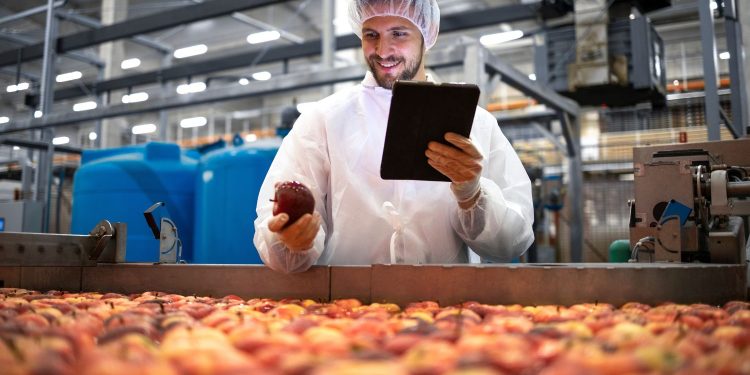The food processing industry relies on many tools and techniques, including the vast landscape of food conveyor systems. Learn the types here.
For manufacturers and engineers in food production, conveyors aren’t just about moving goods from point A to point B—they’re vital arteries in the system that ensure proper product handling with precision, safety, and compliance. This crucial piece of the food processing puzzle merits deeper exploration, starting with a look at not just one but four different types of food conveyor systems that are indispensable to the industry.
The Versatility of Belt Conveyors in the Food Chain
Distinguished by their belts running on rollers, belt conveyors are an industry staple due to their adaptability and quiet, efficient operation. Particularly robust for handling a wide array of packaged foods, these systems boast durability and a range of material handling options. Despite the potential for greater sanitation issues because of their enclosed design, meticulous cleaning regimes can counter these concerns and ensure food processing conveyors meet safety and quality standards.
The Rolling Power of Roller Conveyors
When it comes to certain types of food movement, nothing rolls as smoothly as the aptly named roller conveyors. These are pivotal in cases where there’s a need to avoid spillage or when easily transitioning between different portions of the production process. Their usage streamlines many operations and significantly reduces the risk of contamination or product damage. However, they also require keen oversight to maintain efficiency, necessitating regular checks and possible maintenance of the rollers and conveyor paths.
Screwing Toward Efficient Food Processing
Screw conveyors may seem niche in comparison, but in food processing, they are the silent heroes. Handling everything from powders to bulk materials with precision, screw conveyors are a staple in sectors that rely on regulated ingredient delivery. While perfect for vertical and inclined conveying, their application does come with an operational footprint that requires care and finesse. The design and construction must be well-thought-out to avoid clogging or facilitate cleaning and maintenance quickly and effectively.
Food Processing with Pneumatic Conveyors
Where precision and high-speed operation meet, pneumatic conveyors emerge. In sectors with a demand for ultra-clean handling, like in transporting fine spices, pneumatic conveyors excel. Agility is their advantage, bypassing the rigidity of traditional conveyor systems. Yet, implementing these systems isn’t without its challenges, as managing the air flows and ensuring particle containment is relatively intricate. However, their potential to elevate quality and safety in the food chain is undeniably high.
Understanding the different types of conveyor systems for food processing is a nod to the sophisticated machinery that powers the industry and an in-depth look at how integral these systems are in delivering quality and safety guarantees. Each conveyor type presents its unique set of advantages and application ranges and highlights the intricate care and consideration necessary in the delicate domain of handling consumables.




